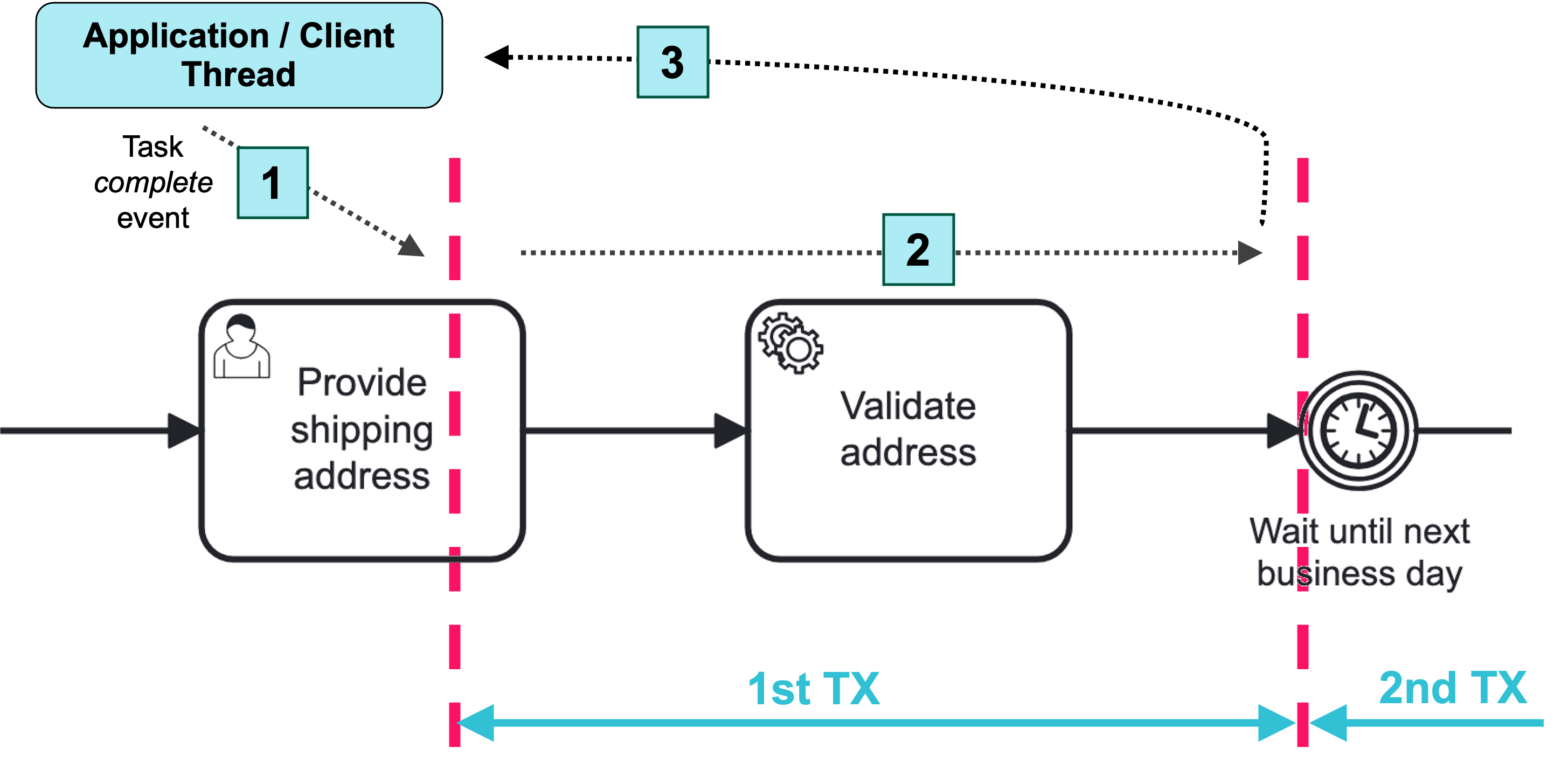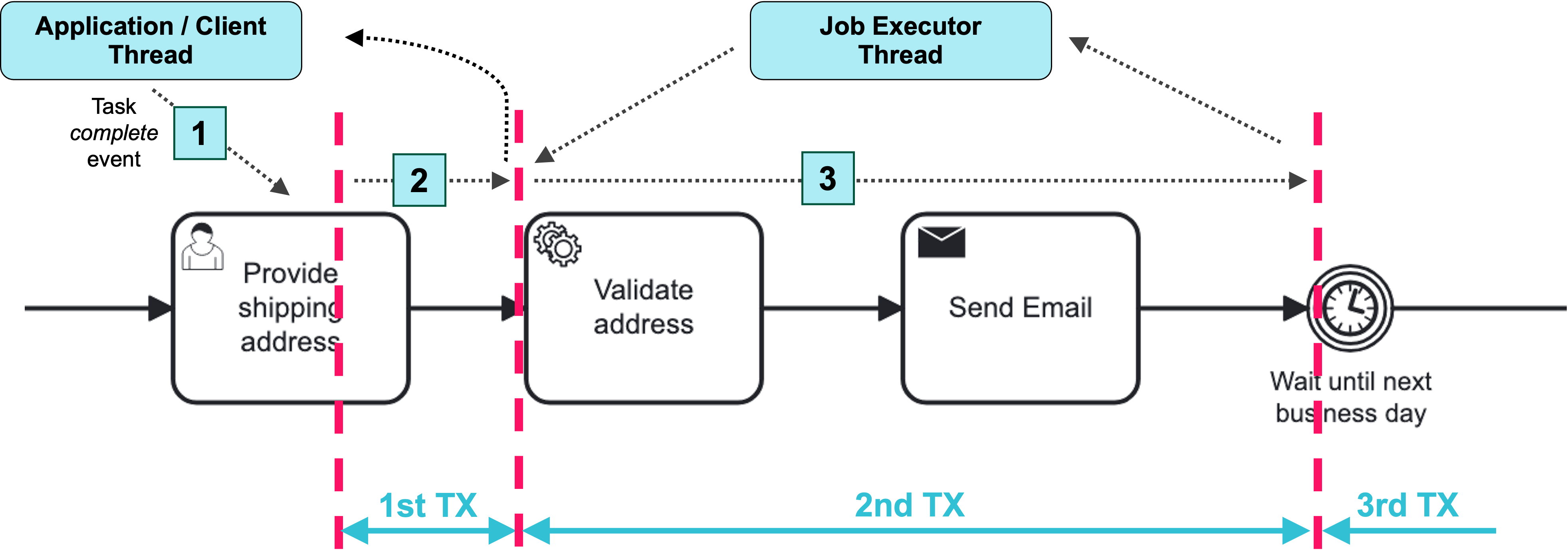Transactions
The process engine executes processes in a transactional manner. A BPMN transaction is a logical unit of work that groups a set of activities together, ensuring that either all activities succeed or, if any activity fails, the effects of the completed activities are undone through compensating actions.
It means when you trigger an action such as starting a process, completing a task, or signaling an execution, the engine advances through the process until it encounters waiting states on all active execution paths. In more concrete terms, the engine performs a depth-first search through the process graph and will return once it has reached waiting states on every branch of execution. This is illustrated in the following picture:

We see a segment of a BPMN process with a user task, a service task and a timer event. Completing the user task and validating the address is part of the same unit of work, so it should succeed or fail atomically.
That means that if the service task throws an exception, we have to roll back the current transaction, such that the execution tracks back to the user task and the user task is still present in the database.
In (1) an application or client thread completes the task. In that same thread, process engine is now executing the service and advances until it reaches a waiting state, in this case, timer event (2). Then it returns the control to caller (3), committing the transaction.
Waiting States
In BPMN, a waiting state refers to a point in the process where the execution is paused, and the process is waiting for an event or a trigger to continue. This state can occur due to various reasons, such as waiting for a message, a timer event, or user input.
Waiting states in process are:
-
User task
-
Timer event
-
Message catch event
-
Signal catch event
-
Service task with external worker
-
Event-based gateway
Asynchronous Continuation
Sometimes we need custom control over transaction boundaries in a process, in order to be able to scope logical units of work. This is where asynchronous continuations come into play. Consider the following process (fragment):

In the next case, we are completing the user task, generating an invoice and then sending that invoice to the customer. This time the generation of the invoice is not part of the same unit of work, so we do not want to roll back the completion of the user task if generating an invoice fails. What we want process engine to do is complete user task (1), commit the transaction and return the control to the calling application.
Then we want to generate the invoice asynchronously, in a background thread. This background thread is the Job Executor (actually a thread pool) that periodically polls the database for jobs. Behind the scenes, when we reach the "generate invoice" task, we are creating a job "message" for the process engine to continue the process later and persisting it into the database. This job is then picked up by the job executor and executed.
To use this feature, we have to set the async property true.

In the XML, it is presented by the attribute flowable:async="true".
<serviceTask id="Activity_0pzv18b" name="Generate invoice"
flowable:async="true" />The async attribute is applicable to:
-
Service task
-
Script task
-
Business rule task
-
Email sending task
-
Embedded subprocess
-
Call activity
Fail Retry
In BPMN, the concept of fail retry refers to the mechanisms implemented to handle failures in service tasks. When a task fails due to an error, the BPMN engine can automatically retry the execution of that task based on predefined configurations. There are two parameters:
-
Number of retries
-
Delay between retries
If the task returns BPMN error, Job Executor waits a specified time and tries to execute the task again. If the maximum number of retries is reached and the task still fails, an incident is created, allowing for manual intervention or further error handling.
|
Fail retry is applicable to asynchronous tasks only. |
|
For synchronous service tasks, retries are not automatically handled by the process engine. If a synchronous task fails, it will throw an exception and stop the process instance. |
